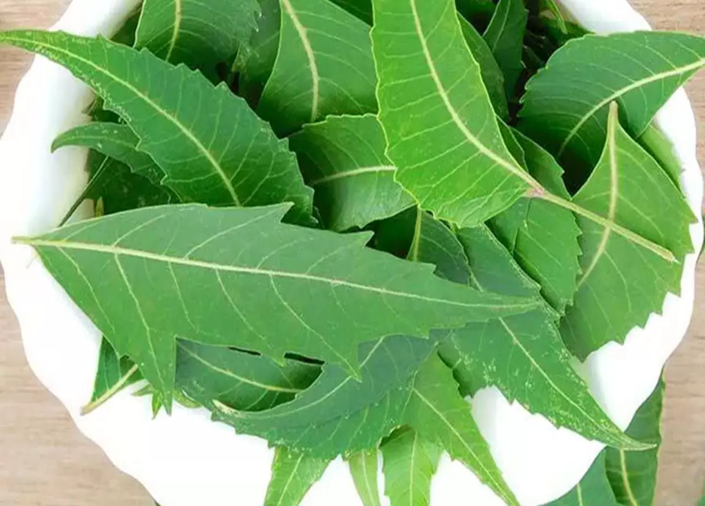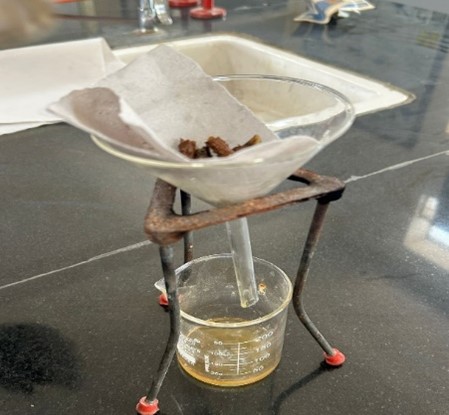Abstract
Blood is a connective tissue that safeguards our body from various issues. Without blood, the body cannot function, and blood does not self-purify. When blood does not purify itself, the kidney, liver, and lymphatic system collaborate to assist in the purification process. Factors contributing to blood impurities include modern lifestyle choices, consumption of junk food, and alcohol intake. Impure blood can lead to various problems, such as acne, rashes, and allergic reactions. Conventional synthetic medications are not available for blood impurities. Herbal formulations are the primary treatment option for blood purification. This review article explores the market formulations and various plants utilized in them, along with their respective activities that aid in blood purification and offer protection against other ailments. Safi Blood Purifier is a herbal remedy with a long history of use, purported to cleanse the blood and promote skin health. This review paper aims to analyze the scientific evidence supporting the efficacy and safety of Safi, examining its ingredients, mechanisms of action, clinical studies, and potential side effects.
Keywords
Safi Blood Purifier, Polyherbal formulation, Herbal ingredients, Detoxification, Antioxidant activity, Anti-inflammatory effects, Skin health, Liver function, Immune function , Blood purification, Ayurveda, Unani medicine, Free radicals, Cardiovascular function
Introduction
Blood is a vital fluid in our bodies that transports essential substances like nutrients, hormones, and oxygen to cells while removing metabolic waste products and toxins. It plays a crucial role in protecting us from illnesses, infections, and aiding in the healing of cuts, scrapes, and wounds. The blood's extracellular matrix, known as blood plasma, suspends various cells and cell fragments.
While the body has mechanisms to purify blood, sometimes it requires additional support. The kidneys, liver, and lymphatic system work together to eliminate unwanted toxins and impurities from the body. However, when these systems are overwhelmed, toxins can accumulate, negatively impacting the blood and muscle tissues. If the liver does not function properly, digestion can become impaired, and the blood-making process can be compromised, leading to impurities in the blood. Safi Blood Purifier is a polyherbal formulation comprising extracts from various medicinal plants, including neem (Azadirachta indica), tulsi (Ocimum sanctum), chiretta (Swertia chirata), and senna (Cassia angustifolia). Traditionally used in Ayurveda and Unani systems of medicine, this formulation aims to detoxify the blood and improve skin conditions like acne and eczema. Safi Blood Purifier is designed to support the vital process of blood purification, essential for overall health. It aids in this process through the combined action of its herbal components.
MATERIAL & METHODOLOGY
Plant profile:
Neem
Botanical name:
Azadirachta indica

Fig no 1 Neem
Common Name:
- Marathi –Kadunimb
- Hindi – Nim
- English- Indian Lilac
Kingdom:
Plantae
Kingdom:
Plantae
Phylum:
Vascular Plant
Class:
Dicotyledons
Order:
Sapindales
Family:
Meliaceae
Genus:
Azadirachta
Species:
Indica
Popular name. –
Nimba tree.
Habitats: -
Dry deciduous forests, also widely planted
- Cultivation:
In arid region Neem planted along the canals are watered for the first 5-7 years. The rate of growth of Neem in plantation varies with the quality of soil. It is fairly rapid upto the age of 5 years after which it slows down. The plant attains a height of 4 m at 5 years and 10 m at 25 years
2.Nutritional Content:

Neem Leaves:
Neem leaves contain a range of compounds including nimbin, nimbidin, nimbinin, nimbolide, and quercetin. These constituents impart neem's bitter taste and potent medicinal properties.
- Uses:
Neem leaves are used in traditional medicine for their antifungal, antibacterial, antiviral, and anti-inflammatory properties. They are often used in skincare products for conditions like acne, eczema, and psoriasis. Additionally, neem leaf extracts are used as a natural pesticide and insect repellent.
- Neem Bark:
The bark of the neem tree contains tannins, flavonoids, and triterpenes.
- Uses:
Neem bark has been traditionally used for its astringent, anti-inflammatory, and antimicrobial properties. It's often used to treat oral health issues like gingivitis and plaque buildup. Additionally, neem bark extracts are used in some herbal supplements and skincare products.
- Neem Seeds
Neem seeds contain various active compounds, including azadirachtin, nimbin, salannin, and meliantriol.
- Uses:
Neem seed extracts are widely used as biopesticides due to their insecticidal properties. They are effective against a broad range of pests but are relatively safe for non-target organisms and the environment when used correctly. Neem seed oil is also used in cosmetics, soaps, and hair care products for its moisturizing and conditioning.
- Neem Oil:
Neem oil is derived from the seeds of the neem tree and contains various bioactive compounds, including triglycerides, steroids, and terpenoids.
- Uses:
Neem oil is popular for its pesticidal properties and is used in organic farming as a natural alternative to synthetic pesticides. It's also used in skincare products for its moisturizing and antibacterial properties. Neem oil is sometimes added to shampoos to treat dandruff and soothe the scalp.
11.Neem Flowers and Fruits :
Neem flowers and fruits contain various bioactive compounds, including flavonoids and triterpenoids.
12.Uses:
Neem flowers and fruits are less commonly utilized compared to other parts of the neem tree. However, they are sometimes used in traditional medicine for their antimicrobial and anti-inflammatory properties. Additionally, neem fruit extracts are used in some cosmetic formulations for their skin-nourishing benefits.
Methodology:


Fig no 1 : Formulation of herbal syrup

Evaluation parameter:
- Physical evaluation of the formulation
The formulation were inspected visually for their appearance , colour , odour.
- Measurement of pH
The pH was measured using a pH meter, which was calibrated before each use with standard buffer solutions at pH 4, 7, 9. The electrode was inserted into the sample 10 minutes prior to taking the reading at room temperature.
- Viscosity
The viscosity of the formulations was checked using a Brookfield Viscometer (DV-I PRIME, USA). The lip balm were rotated at 0.3, 0.6, 1.5 rotations per minute. The viscosity of the gel was obtained by multiplying the corresponding dial reading with the factor given in the Brookfield Viscometer catalogue.
- Spreadability
Begin spreading the lip balm by using gentle pressure and smooth motions.Pay attention to how easily the lip balm spreads across the surface of your skin. Note any resistance, dragging, or uneven distribution.Assess the ability of the lip balm to cover the entire test area uniformly without leaving clumps or patches.
Spreadability Calculated by,
S = M.L / T
where,
M = wt tied to upper slide
L = length of glass slides
T = time taken to separate the slides
5.Stability
Analyze the stability of active herbal ingredients and other components.Test for degradation or loss of potency of herbal extracts due to exposure to light, oxygen, or temperature fluctuations.Assess compatibility between the lip balm base and herbal ingredients to prevent interactions that could lead to degradation.
RESULT & DISCUSSION

CONCLUSION
Herbal blood purifier syrups are formulated to cleanse the blood and support overall health. Here's a detailed conclusion about their effectiveness:
ACKNOWLEDGEMENT
Acknowledging the use of herbal blood purifier syrup is essential for understanding its potential benefits and effects. It's crucial to recognize that herbal remedies can have varying impacts on individuals and may interact with other medications or conditions. Always consult with a healthcare professional before starting any new supplement or medication.
REFERENCES
- Nancy choi MD, Tim Newman, "All about Coughs and their causes", 2017.
- Sultana S, Khan A, Safhi M. M and Alhazmi H.A, “Cough Suppressant Herbal Drugs: A Review”, International Journal of Pharmaceutical Science Invention,2016, 5(5) ,15-28.
- Abdul Aziz, Khan I. A, Aqsa Afza, Munawar S.H, “Formulation and Evaluation of HerbalAntitussive Syrup of Methanolic Extract of Lycopus Europaeus in Mice”, American Journal ofPharmacy and Health Research, 2013,1(3)
- Thompson M, Vodicka TA, Blair PS, Buckley DI, Heneghan C, Hay AD, “Duration of symptoms of respiratory tract infections in children: systematic review”, BMJ, 2013.
- Ken Harris, “When a cough may be more than just a cough", OSF healthcare, Jan 2021
- Patil A.G, Mirajakar K J, Savekar P.L, Bugaditkattikar C.V, Shintre S.S, “Formulation and Evaluation of Ginger Macerated Honey Base Herbal Cough Syrup”, International Journal of Innovative Science and Research Technology, 2020, 5(6): 582-588.
- Herbycin, Types of Coughs, April,2020
- Kalpesh B Vaishnav, “Diagnostic Approach to Cough”, Supplement to Journal of theAssociation of Physicians of India, 2013, vol. 61.
- Kathleen Kenny, “Cough: Navigating the Classifications”, Pharmacy Times, 2015, 81(11)10) Sharma S, Hashmi M. F, Alhajjaj M.S, "Cough", Stat Pearls publishing, 2021
- Francine Kauffmann, Raphaelle Varraso, “The epidemiology of Cough”, Pulmonary Pharmacology and Therapeutics, 2011, 24, 289- 294
- Carroll, Thomas L., Chronic Cough, 2019 https://en.m.wikipedia.org/wiki/Cough 12. Abiodo Akanmode, “Cough pathophysiology”, Creative commons Attribution/Share-Aikelicense, 2020 13. G Sant Ambrogio, J Widdicombe, “Reflexes from airways rapidly adapting receptors",National library of Medicine, 2009
- Pt. Kashinath Sastri, Vidyotini hindi commentary, Charaka Samhita of Agnivesha, Chikitsasthana Grahanidosha Adhyaya; chapter 15 verse 16-17; Chaukhambha Bharati Academy, Varanasi, 2013; page no. 456.
- Kaviraja Ambikadutta Shastri (Part 1) Shushruta Samhita with elaborated Ayurveda Tatva Sandipika Sutra Sthan Shonitvarniya Adhyaya; chapter 14 verse 04; Chukhambha Sanskrit Sansthan, Varanasi, 2014; Page no. 63.
- Dr. Brahmanand Tripathi Astanga Hrdayam of Srimadvagbhata with elaborated Nirmala hindi commentary Sharir Sthana Angavibhagasharir Adhyaya; chapter 03 verse 62; Chaukhambha Sanskrit Prakashan Delhi, 2012; page no. 377.
- Pt. Kashinath Sastri, Vidyotini hindi commentary, Charaka Samhita of Agnivesha, Chikitsathana Grahanidosha Adhyaya; chapter 15 verse 16-17; Chaukhambha Bharati Academy, Varanasi, 2006; page no. 380.
- Pt. Kashinath Pandey & Dr. Gorakhnath Chaturvedi, Vidyotini hindi commentary, Charaka Samhita Vimanasthana Srotovimana Adhyaya; chapter 05 verse 08; Chaukhambha Bharati Academy Varanasi, 2013; page no. 711.
- Kaviraja Ambikadutta Shastri (Part 1) Shushruta Samhita with elaborated Ayurveda Tatva Sandipika Sharir Sthan Dhamanivyakaran Adhyaya; chapter 09 verse 12;Chukhambha Sanskrit Samsthan, Varanasi, 2014; Page no. 96.
- Pt. Kashinath Sastri, Vidyotini hindi commentary, Charaka Samhita of Agnivesha, Chikitsathana Raktapitta Adhyaya; chapter 03 verse 7-8; Chaukhambha Bharati Academy, Varanasi, 2013; page no. 179.
- Pt. Kashinath Sastri, Vidyotini hindi commentary, Charaka Samhita of Agnivesha, Chikitsathana Grahanidosha Adhyaya; chapter 15 verse 18-19; Chaukhambha Bharati Academy Varanasi, 2013; page no. 456.
- Kaviraja Ambikadutta Shastri (Part 1) Shushruta Samhita with elaborated Ayurveda Tatva Sandipika Sutra Sthan Shonitvarniya Adhyaya; chapter 14 verse 09; Chukhambha Sanskrit Samsthan, Varanasi, 2014; Page no. 65.
- Pt. Kashinath Pandey & Dr. Gorakhnath Chaturvedi, Vidyotini hindi commentary, Charaka Samhita Vimanasthana Srotovimana Adhyaya; chapter 05 verse 14; Chaukhambha Bharati Academy Varanasi, 2013; page no. 713.
- Alam A, Siddiqui JI, Kazmi MH, Ahmad I, Moin MS.Tasfiyaal-dam (Blood purification) in Unani perspective: Acomprehensive review. International Journal of HerbalMedicine 2020; 8(2):100-105.
- Ali A., Naqvi S, Baqir G, Shahnaz, Rehana., Anti-inflammatory and analgesic activities of ethanolic extract of Sphaeranthus indicus Linn. Pakistan J Pharm Sci. 2011; 24(3):405-409.
- Amavade SD, Mhetre NA, Tate VD, Bodhankar SL. Pharmocological evaluation of the extracts of Sphaeranthus indicus flowers on anxiolytic activity in mice. Indian J Pharmacol, 2006;8(4):254-9.
- Anonymous. Standardization of Single Drugs of Unani Medicine. Part 1. (New Delhi: Central Council for Research in Unani Medicine), pp. 230-1, 1987.
- .Anonymous. The Wealth of India. Vol X. (New Delhi: CSIR), pp. 107-111, 2003.
- Badgujar LB, Ghosh, Gaur V, Bodhankar SL. Effect of petroleum ether extract of Sphaeranthus indicus Linn. On complete freunds adjuvant induced arthritis in laboratory rats. Pharmacology Online. 2009; 2:281-91.
- Bafna AR and Mishra SH. Immunomodulatory activity of methanol extract of flower heads of Sphaeranthus indicus Linn. Ars Pharmaceutica. 2004;45(3): 281-91.
- Chakrabarti D, Suthar A, Jayaraman G, Muthuvelan B, Sharma S, Padigaru M. NPS31807, a standardized extract from Sphaeranthus indicus, inhibits inflammatory, migratory and proliferative activity in keratinocytes and immune cells. Pharmacol Pharmacy. 2012;(3)2 :178-194
- .Chopda M., Patole SS, Mahajan RT. Wound healing activity of Sphaeranthus indicus (Linn) in Albino rats, Bioresources for Rural Livelihood: Edited by: G.K. Kulkarni, B.N. Pandey and B.D. Joshi. (New Delhi: Narendra Publishing House), pp. 239-44, 2010.


 Garje Bajirao Baban* 1
Garje Bajirao Baban* 1





 10.5281/zenodo.11401070
10.5281/zenodo.11401070